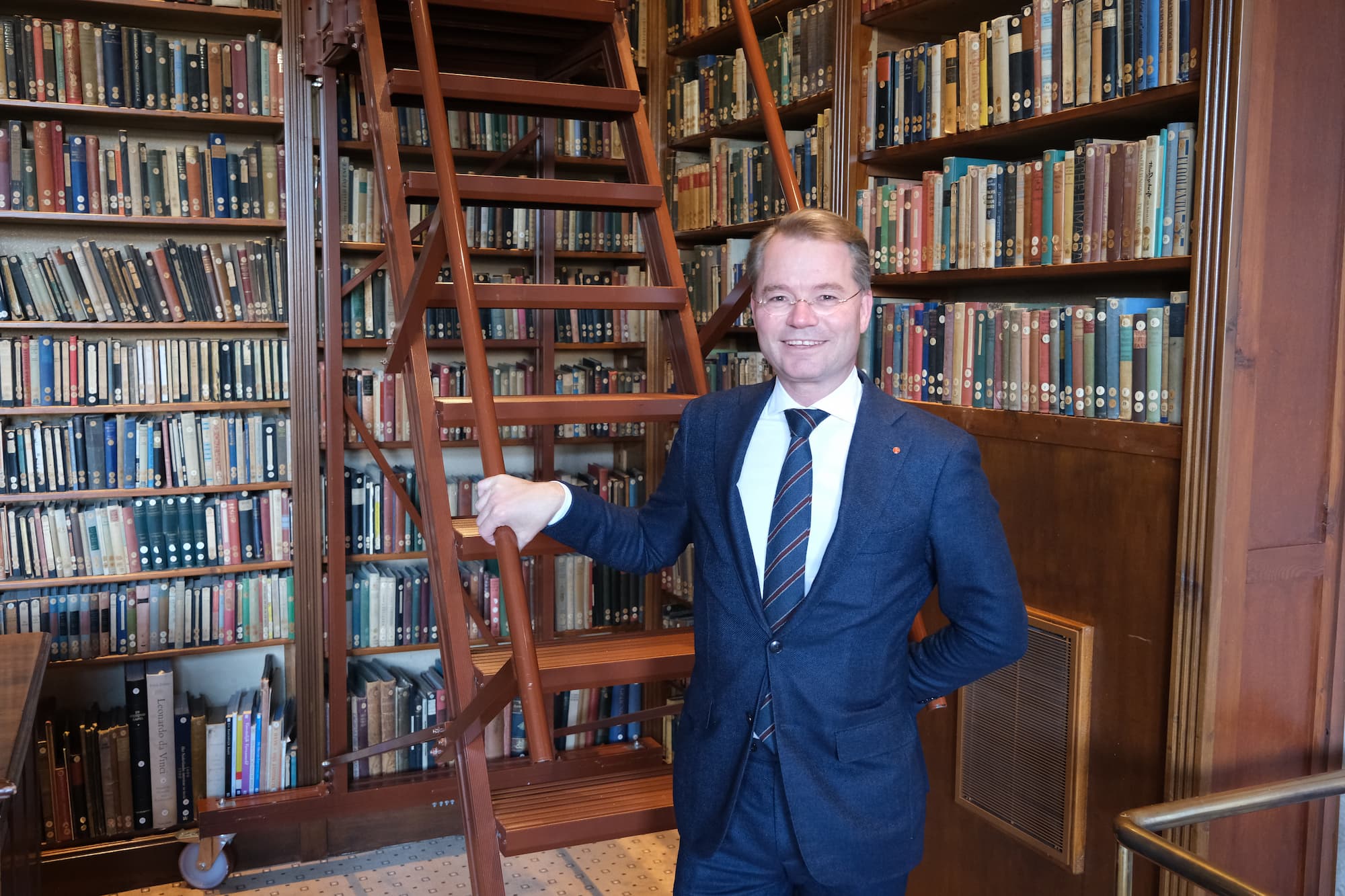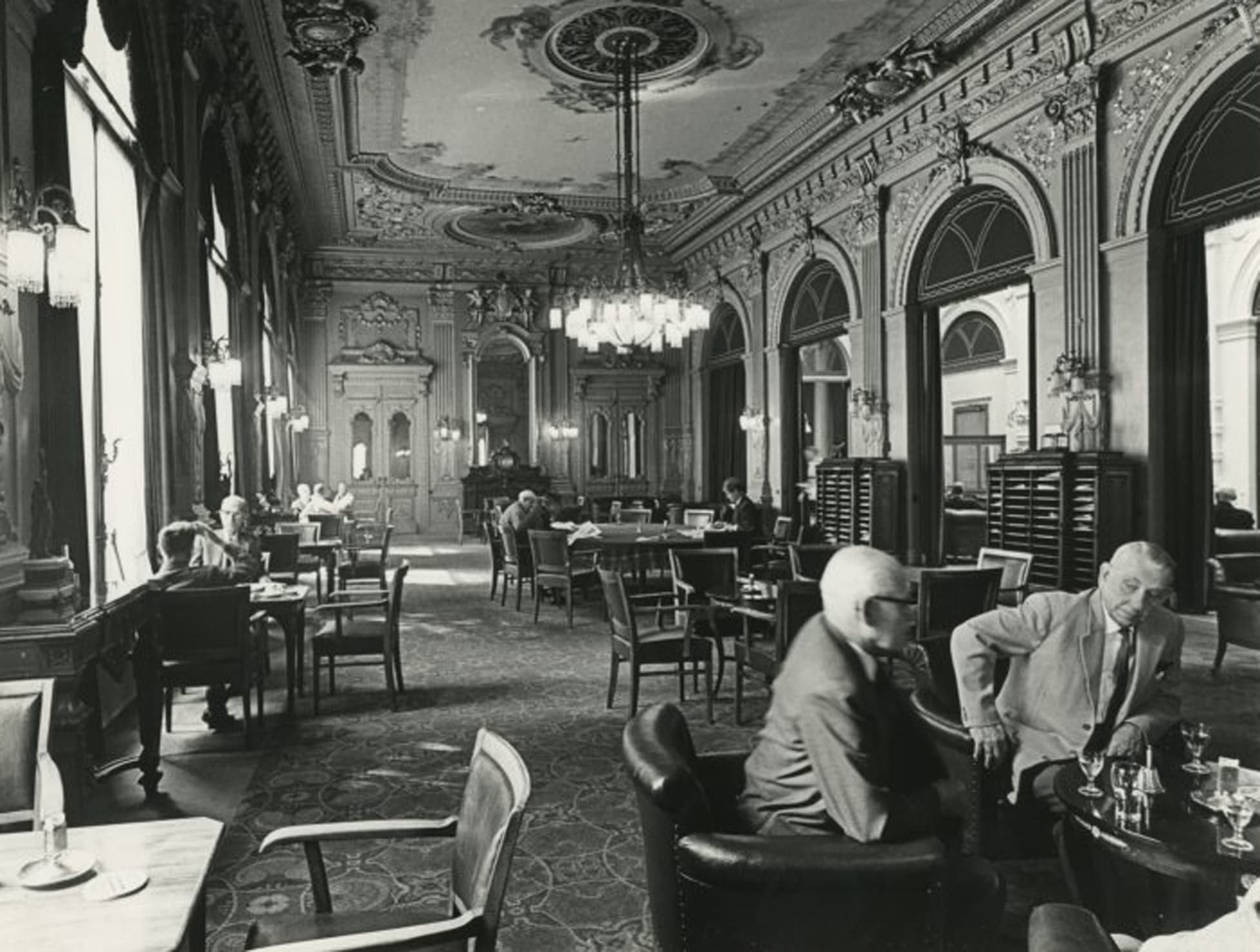
'De Witte'
The Nieuwe of Littéraire Sociëteit De Witte ('De Witte'), founded in 1782, is a private club which has enjoyed a prominent position in The Hague’s social life for more than two centuries. 'De Witte' has been housed in a monumental building on the Plein, next to the famous Mauritshuis and the Binnenhof, since 25th October 1870. The club is easily accessible both by car and public transport.
De Witte offers its members extensive facilities in the Pleingebouw (main building). Club life predominantly takes place in our summer residence, Paviljoen De Witte in Scheveningen, during the summer months. The essence of club life is still pretty much the same as it was back in 1782, i.e. 'socialising and respectable away-from-home activities'. The club’s more than 3,300 members are active in a variety of different ways, through tables, (sports) clubs and committees, which includes the organisation of various types of meetings; from lectures, drinks and dinners, to sports activities and trips abroad. There are also annual club events, which can be found in the Agenda.
Certain dress codes need to be observed when visiting the Club or the Paviljoen.

History
The club
The Nieuwe of Littéraire Sociëteit De Witte was founded in 1782 and has enjoyed a prominent position in The Hague’s social life for more than two centuries.
The Club is popularly known as De Witte, because of its first building on the north side of the Plein, which had a white facade. This is where 114, mainly young, dignitaries founded the new association for socialising and respectable away-from-home activities on the ground floor of a coffee house. New, because this actually concerned a re-establishment as a result of political developments. Littérair as a pretext for escaping the far-reaching limitations in place where associations were concerned in the French era. The 'De Witte' term was not officially added to the Club’s name until 1950. The Club’s current objective is to statutorily promote its members’ mutual communication and its members’ practicing of literature, the fine arts, history and other sciences. For example, the library has grown into one of The Hague’s largest private libraries over the years, since its foundation in 1855. Numerous tables with cultural backgrounds have been set up. The Littéraire Witte Prize has been awarded for literary work by a The Hague author or on a The Hague subject every two years since 1975. De Witte started out as a traditional men's club, but ladies have also been able to obtain full membership with voting rights since May 1998. The number of female members is now more than six hundred. De Witte's members mainly come from the civil service, the business community, the liberal professions, the academic and military world, the diplomatic service, international organisations and branches of foreign companies in The Hague.

The Pleingebouw
The Club, which was established on the ground floor of a coffee house on the north side of the Plein in 1782, soon ran out of space due to the rapidly growing number of members. Initially the two adjacent buildings were purchased for expansion from 1820. Over time, all the buildings on the north side of the Plein were taken up by the Club. The building has acquired its current size in three phases. Phase I: It was decided to demolish the three buildings which housed the Club and to start a new construction in 1870. In that same year, a spacious club building, designed by architect C. Outshoorn, was erected. Phase II: The building was expanded with a new wing, designed by architect J. Mutters Jr, in 1900. The interior of this new section was also designed in line with his design in Jugendstil. Phase III: The last extension on the side of the Mauritshuis was realised in 1930 in Art Deco style, designed by architect J. Limburg. The building was given a symmetrical facade, which occupies the entire north side of the Plein with a polygonal rounding on the side of the Korte Vijverberg. The building underwent various simplifications, both internally and externally, in 1930, in which the exuberant Jugendstil interior was replaced by an interior in a more austere Art Deco style. The building is a national monument and almost the entire interior has been thoroughly restored in phases since the 1990s, in close collaboration with Monumentenzorg.
The Paviljoen (Pavilion)
The Nieuwe of Littéraire Sociëteit De Witte in Scheveningen has been the proud owner of a beautiful outdoor club by the sea since 1918: 'Paviljoen De Witte'. The Paviljoen was built in 1827 by order of King William I, as a birthday gift for his Queen Consort Frederica Louisa Wilhelmina of Prussia.
The Paviljoen has been inherited several times since that time, but fell out of royal hands in 1911. The successive owners' plans to turn it into an 'entertainment building' with a casino didn’t come to fruition. The Paviljoen was subsequently taken on by the club in 1918. The Paviljoen was still virtually in its original state at that time, although the building had fallen into disrepair somewhat by then. However, a plan for modernisation wasn’t carried out due to 'changing time conditions' and high costs. The financial situation forced the board to give priority to land sales. That resulted in the Club selling three quarters of the surrounding land in the 1920s. The building was eventually thoroughly renovated and expanded by architect J. Limburg in 1926. The Paviljoen was due for a major restoration in the 1980s, but the financial situation dictated that a choice needed to be made between selling or adapting the destination. An agreement was eventually reached with Professor Theo Scholten, who was allowed to build a museum for his sculpture collection on the Paviljoen site. This included the realisation of Museum Beelden aan Zee (Sculptures by the Sea) by architect Wim Quist below and next to the Paviljoen. A thorough restoration of the Paviljoen formed part of the agreement entered into with Scholten. Both projects were completed in 1994. The forecourt on Pellenaerstraat was fenced off with a beautiful hard glass wall at the end of 1998 - 'The Transparent', also a design by architect Quist. This wall consists of sixteen panels, in which texts are engraved by well-known Dutch poets and writers.
